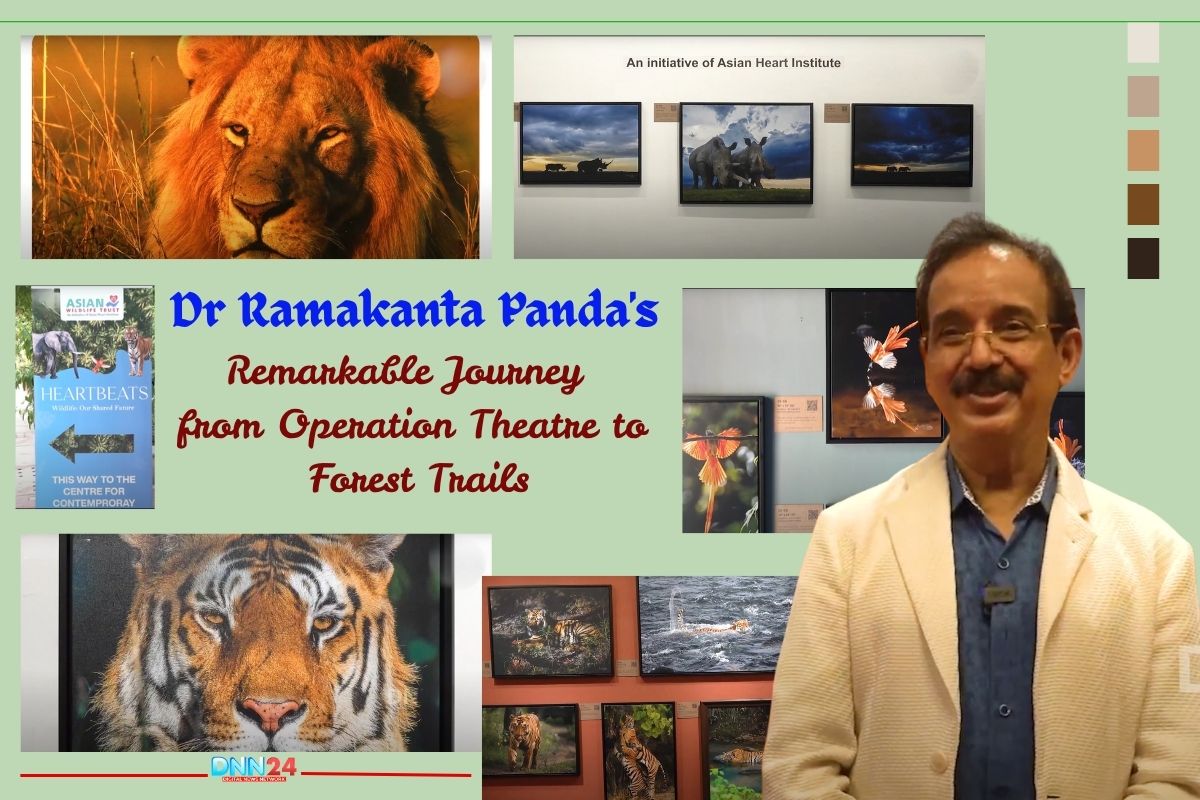The Asian Wildlife Trust recently partnered with Dr Ramakanta Panda to present ‘Heartbeats’, a wildlife photography exhibition that bridges two seemingly different worlds. Dr Panda stands among India’s most respected cardiac surgeons, yet his passion extends far beyond the sterile confines of hospital walls. His camera lens captures the untamed beauty of nature with the same precision he applies to delicate heart surgeries. Union Minister Nitin Gadkari welcomed the exhibition as the Chief Guest, while Union Environment Minister Bhupendra Yadav chaired the proceedings.
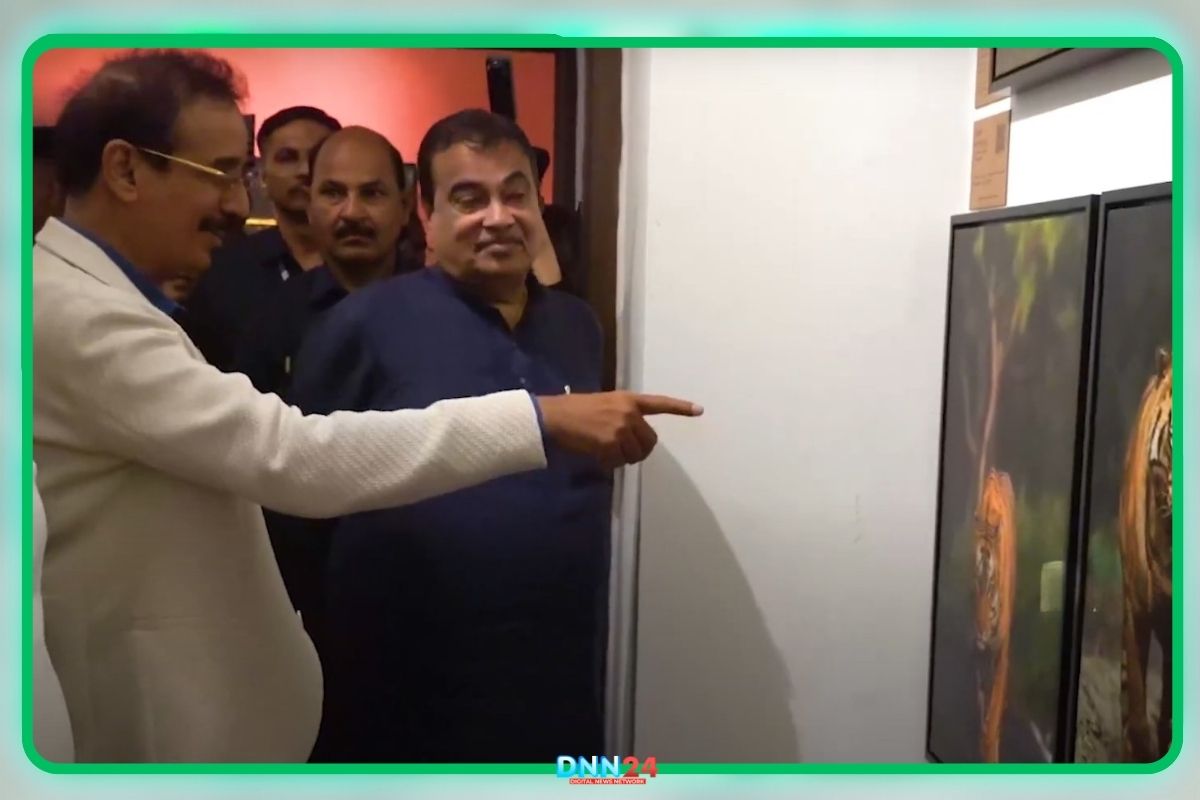
Rajeev Shukla and Dinesh Trivedi graced the occasion as Guests of Honour. Visitors were mesmerised by photographs that revealed nature’s intimate moments, captured in time through patience and dedication. The event celebrated not only artistic achievement but also a more profound commitment to wildlife conservation. Dr Panda’s dual identity as healer and artist demonstrates how seemingly disparate passions can coexist beautifully. His work reminds us that those who understand the human heart often possess a profound appreciation for the natural world. The exhibition served as a testament to the idea that creativity flourishes when we step outside our professional boundaries and embrace diverse interests.
The Surgeon Who Waits in Forest Shadows
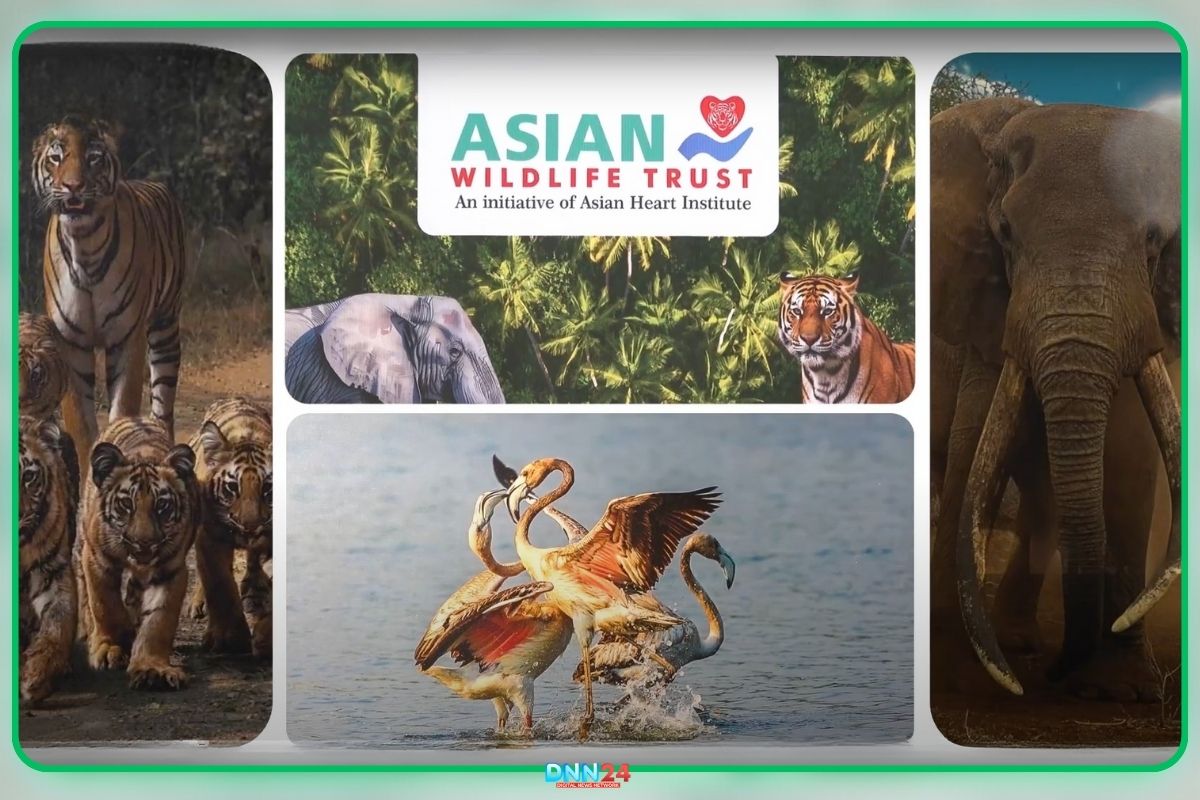
Dr Ramakanta Panda’s transition from cardiac surgery to wildlife photography appears natural when one considers the common thread binding both pursuits: patience. Heart surgery requires unwavering concentration during procedures that last twelve to fourteen hours, where even a single moment’s distraction could prove catastrophic. Similarly, wildlife photography requires hours of silent waiting, often in uncomfortable conditions, for that perfect instant when light, subject and composition align flawlessly. Dr Panda himself acknowledges this connection, noting how his medical training prepared him ideally for the demands of photography.
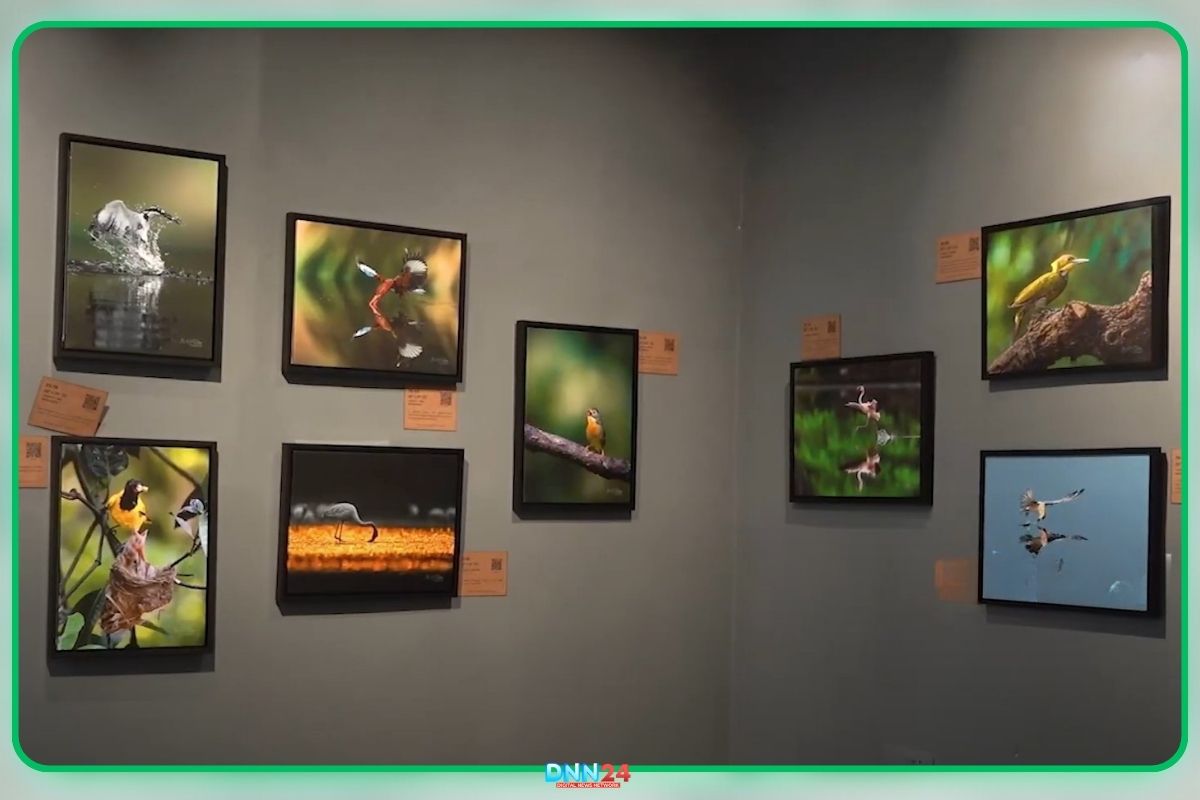
Every two weeks, he escapes urban life for two or three days in the wilderness, treating these excursions as essential respite rather than mere hobby. His visits to Tadoba, Umred, Gothnangaon and Pench have become regular pilgrimages, where he documents tigers and other wildlife in their natural habitat. The photographs displayed at the exhibition showcase moments that leave viewers stunned by their beauty and rarity. One particularly striking image captures a lion against a sunset, with a rainbow appearing directly above its head, a composition so extraordinary that many questioned its authenticity. These images do not emerge from luck but from dedication, meditation and countless hours spent understanding animal behaviour and natural light patterns.
Beyond Photography: A Trust That Transforms Lives
The Asian Wildlife Trust, which Dr Ramakanta Panda has supported actively for twenty years and led more intensively over the past five to seven years, extends its mission far beyond photography exhibitions. The organisation works comprehensively across all national parks in India, focusing on wildlife conservation while recognising that proper conservation cannot ignore human welfare. The trust provides essential facilities and support to approximately 25,000 forest workers, acknowledging that those who work daily in conservation deserve care and resources. Their initiatives include tribal children’s education programmes, ensuring that communities living alongside wildlife benefit from conservation efforts rather than suffer from them.
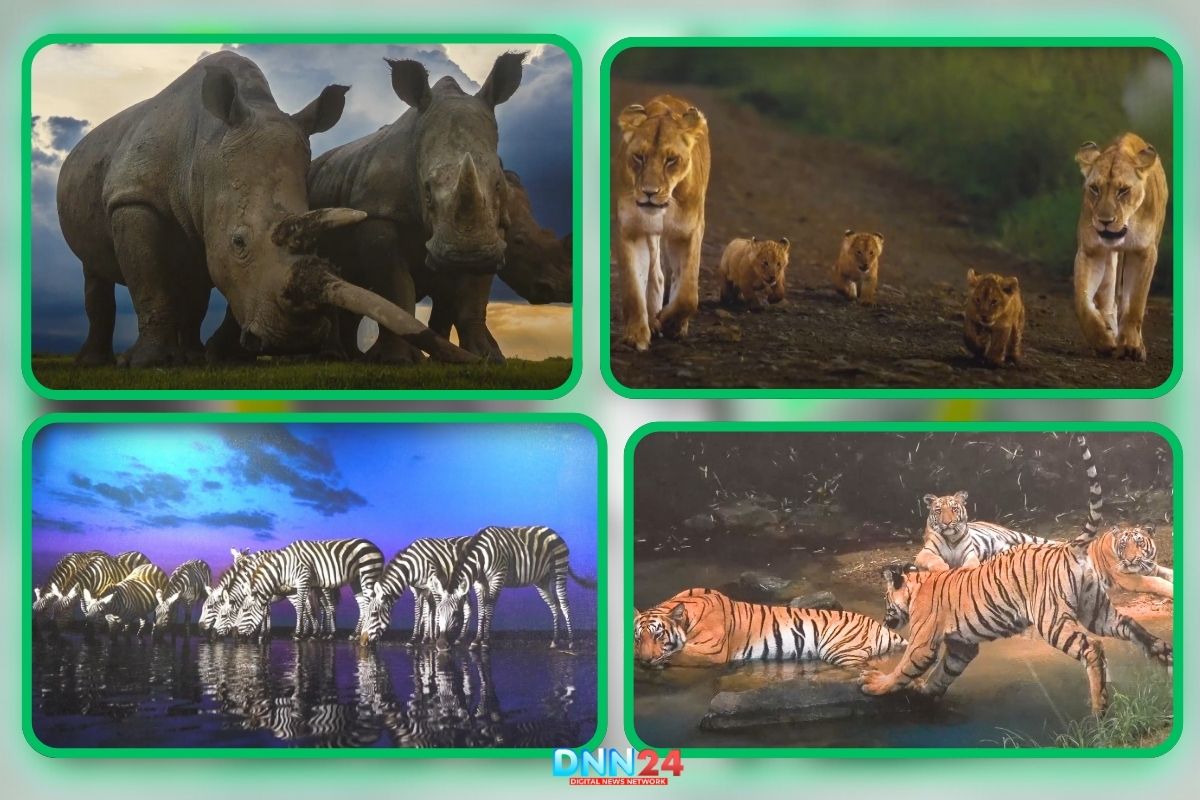
Dr Panda introduced the innovative concept of animal ambulances, addressing emergency medical needs for wildlife that previously went unmet. This holistic approach recognises that conservation succeeds only when local communities become partners rather than adversaries in protecting nature. Staff welfare programmes ensure that forest guards and workers receive adequate support, healthcare and recognition for their crucial role. The trust’s work demonstrates that effective conservation requires addressing human needs in conjunction with the protection of wildlife. Union Minister Nitin Gadkari praised this comprehensive approach, noting that Dr Panda’s contribution extends beyond good doctoring to encompass environmental consciousness, a quality he deemed essential for anyone claiming expertise in their field.
Lessons from the Wild: Patience, Restraint and Coexistence
Minister Gadkari raised a thought-provoking point during the exhibition, suggesting that the term “wildlife” deserves reconsideration because, contrary to popular perception, life in forests demonstrates remarkable restraint rather than wildness. He referenced how Indian culture has long recognised this truth, depicting gods and goddesses with animal vehicles: the lion for Durga, the tiger for various deities, the mouse for Ganesha. These associations symbolise qualities humans should emulate, particularly the restraint and balance that animals naturally embody. Dr Panda’s photographs capture this essence beautifully, showing animals not as fearsome predators but as creatures living with dignity and purpose within their ecosystems.
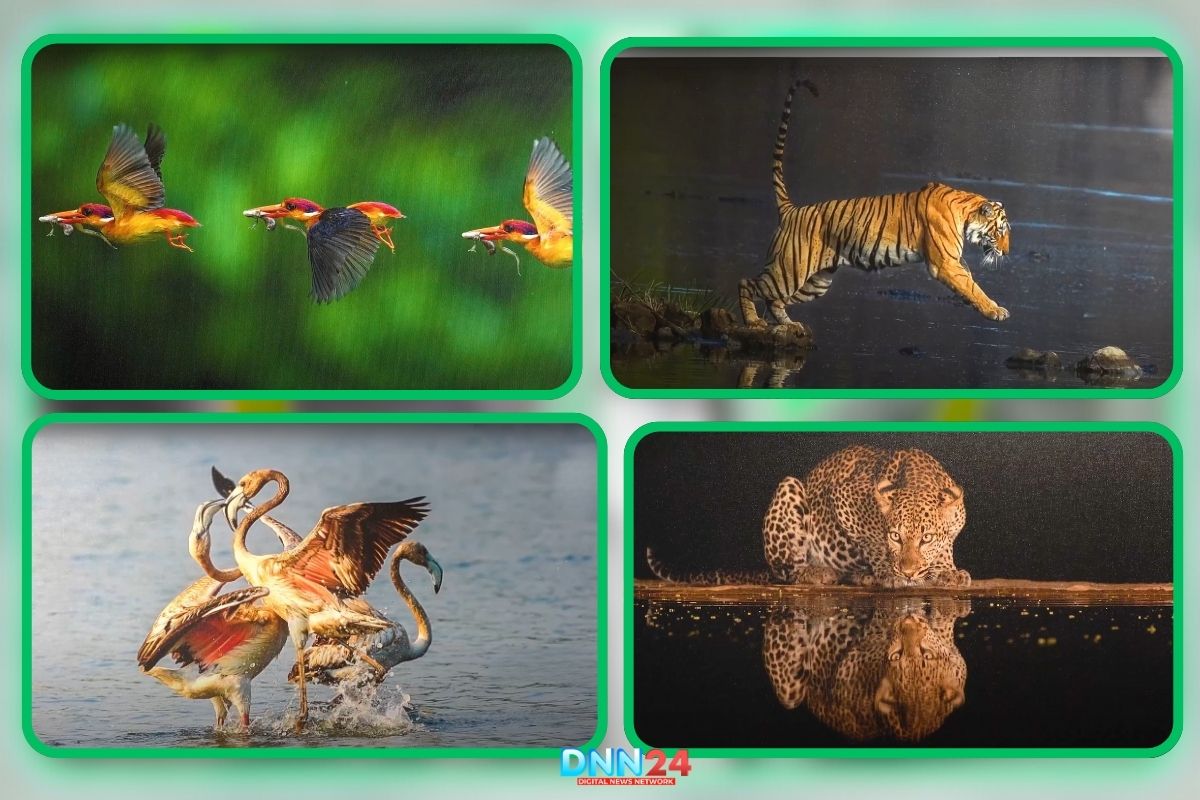
His favourite image carries the message that sufficient room exists for both wildlife and humans to coexist peacefully, provided we approach nature with respect and understanding. The exhibition’s photographs serve not only as artistic achievements but also as educational tools for future generations, inspiring them to value and protect their natural heritage. Minister Gadkari particularly emphasised this point, expressing hope that these captured moments would motivate coming generations toward conservation. The ministers present also noted how Dr Ramakanta Panda, despite hailing from Odisha, a state renowned for its cultural connection to nature, chose Maharashtra’s forests for much of his photographic work, strengthening ties between regions through shared environmental values.
Also Read: Kovai Kulangal Padhukappu Amaippu: Ordinary Citizens Revived Coimbatore’s Dying Lakes and Rivers
You can connect with DNN24 on Facebook, Twitter, and Instagram and subscribe to our YouTube channel.

